October is officially Merlot Month (aka #MerlotMe on Twitter) which celebrates the long awaited comeback of this most maligned grape variety. I was fortunate to have the opportunity to talk about this happy occasion recently with John Favole and the team at WPTV Channel 5.
While everyone likes to blame the 2004 movie Sideways for Merlot’s vinous demise, Miles’ rant was just the final nail in the grape’s coffin at the time. The truth is, its popularity had been declining for awhile. At the height of Merlot’s fame, demand was so great some growers were pulling up other, less-profitable vines in order to make room for more of it. This meant planting Merlot vines in less than optimal sites, resulting in the production of poor quality wine. Unfortunately, it became more about quantity than quality. Now, after almost a decade of vinous obscurity, it’s the quality vineyards tended by the true Merlot lovers that mostly remain.

But what’s so great about Merlot anyway and WHY are we celebrating it with Merlot Month? For those who are newbies or just need a reminder, on the likeability scale, Merlot rates pretty high! Known for its plush, lush notes of cherry, plum and chocolate and soft, supple tannins…frankly, what’s NOT to like? It’s inherent characteristics also make it approachable at a young age, unlike its vinous counterpoint Cabernet Sauvignon, a grape known for aggressive tannins and bold flavors which often needs time in the bottle to soften. While both grapes make delicious varietal wines, the two also complement each other beautifully which is why they are often blended together.

While Merlot was officially “born” in France and is still the most widely planted grape in Bordeaux, wonderful examples of the wine can be found in many countries across the globe including Italy, Australia, Chile and the US. Each country imparts its own unique stamp on this grape which can be somewhat of a chameleon depending on where it’s grown. In cooler climates, Merlot is known for exhibiting notes of black and blue fruit, minerals, licorice and herbs. Warmer climates accentuate the grape’s fruitiness, highlighting cherry, candied berry, mocha, spice and soft, sweet tannins.

When it comes to food, due to its supple, fruity nature, Merlot pairs wonderfully with a variety of different dishes. Its hearty texture makes it perfect for serving with dishes such as hard cheeses, cheeseburgers, stews, roasted chicken and steak. Those with a sweet tooth also enjoy it with chocolate-based desserts which complement its lush, fruity tendencies.

I hope you enjoy Merlot Month and continue to enjoy this delicious grape all season long! Please check out our list below of our recommended wines at a variety of different price points. If you’d like to watch the entire WPTV segment, please scroll down to the video below or simply click here. Also, if there’s a particular brand of Merlot you enjoy I’d love to hear about it in the Comments section below. Be sure to share your vinous exploits on Twitter using the hashtag #MerlotMe and check out what other wine lovers are drinking as well.
1.) Falesco Merlot Tellus, Umbria, Italy, 2013 ($14)
2.) Mollydooker Merlot The Scooter, McLaren Vale, Australia, 2013 ($25)
3.) Peju Province Merlot, Napa Valley, CA, 2013 ($35)
4.) Duckhorn Merlot, Napa Valley, CA, 2013 ($50)
5.) Mt. Brave Merlot Mt. Veeder, Napa Valley, CA, 2013 ($75)
6.) La Jota Merlot Howell Mountain, Napa, CA, 2013 ($80)
The post Celebrating Merlot Month on WPTV Channel 5 appeared first on The Glamorous Gourmet.
The term terroir refers to the way a region's climate, soil and winemaking techniques converge to express themselves in your wine glass. Terroir-driven wines reflect a region's unique characteristics, meaning even wines made from the same grape variety can look, smell and taste very different depending on where they're from. While it's one thing to explore this concept by reading wine magazines, books or your favorite blog, it's another to have a world-renowned Sommelier and winemaker come to town and demonstrate it for you. Using his own wines.Such was the case recently, when one of the world's most celebrated Somms hosted a wine dinner for lucky wine lovers at one of our favorite local restaurants here in Delray Beach. The multi-course meal at 32 East featured two-time James Beard Award winner and author of Secrets of the Sommeliers, Rajat Parr, and wines from two of his latest vinous projects, Evening Land Vineyards and Domaine de la Côte, hailing from Oregon and California respectively. The sold out dinner featured a selection of Parr's Chardonnays and Pinot Noirs paired with the cuisine of 32 East Chef, John Thomas. During the course of the evening, Parr shared details of his own personal journey. Born and raised in Calcutta, Parr was first introduced to great wines at the age of 20 by his Uncle who lived in London. He later made his way to the United States and studied at the prestigious Culinary Institute of America's Hyde Park campus to become a Chef. After graduation, however, his love of the cellar prevailed and he proceeded to learn from the best. Parr honed his vinous acumen and tasting skills under the tutelage of Master Sommelier Larry Stone at his iconic San Francisco restaurant, Rubicon.Parr later joined forces with Chef Michael Mina as Wine Director of what would become The Mina Group's eponymous culinary empire, consisting of over 20 restaurants across the country. During this time, Parr's travels to European wine regions and work as a Somm gave rise to a curiosity about winemaking. He developed a particular affection for the wines of Burgundy and its hallmark grape varieties, Chardonnay and Pinot Noir. Santa Barbara winemaker Sashi Moorman shared Parr's love of balanced, food friendly wines and in 2011, the two partnered on their first of many winemaking ventures, Sandhi, which focused on Chardonnay and Pinot Noir from select vineyards in California's Sta. Rita Hills.
The sold out dinner featured a selection of Parr's Chardonnays and Pinot Noirs paired with the cuisine of 32 East Chef, John Thomas. During the course of the evening, Parr shared details of his own personal journey. Born and raised in Calcutta, Parr was first introduced to great wines at the age of 20 by his Uncle who lived in London. He later made his way to the United States and studied at the prestigious Culinary Institute of America's Hyde Park campus to become a Chef. After graduation, however, his love of the cellar prevailed and he proceeded to learn from the best. Parr honed his vinous acumen and tasting skills under the tutelage of Master Sommelier Larry Stone at his iconic San Francisco restaurant, Rubicon.Parr later joined forces with Chef Michael Mina as Wine Director of what would become The Mina Group's eponymous culinary empire, consisting of over 20 restaurants across the country. During this time, Parr's travels to European wine regions and work as a Somm gave rise to a curiosity about winemaking. He developed a particular affection for the wines of Burgundy and its hallmark grape varieties, Chardonnay and Pinot Noir. Santa Barbara winemaker Sashi Moorman shared Parr's love of balanced, food friendly wines and in 2011, the two partnered on their first of many winemaking ventures, Sandhi, which focused on Chardonnay and Pinot Noir from select vineyards in California's Sta. Rita Hills. While the Sandhi wines were crafted from purchased grapes, in 2013 Parr debuted the wines of his new estate vineyard, Domaine de la Côte, located in California's western Sta. Rita Hills. In 2014, he and Moorman also took control of the acclaimed Seven Springs Vineyard in Oregon's Eola-Amity Hills. Riding on the momentum of these projects, and the desire to focus on making wine, Parr recently made two major life adjustments.In March he quietly (and amicably) parted ways with the Mina Group, sharing, "I'm officially retired from the restaurant, but they know they can call me any time." Parr is also winding down the trend-setting, controversial, non-profit wine group, In Pursuit of Balance he co-founded with Jasmine Hirsch in 2011. As set forth in their Manifesto of Balance, IPOB favors, "balanced, non-manipulated incarnations of Chardonnay and Pinot Noir." By eschewing the syrupy, high octane versions currently being marketed to US consumers, some acclaimed wine critics viewed the group as "elitist" which made some waves in the wine world. "We started it for fun and it was supposed to be a small intimate tasting but it became this big thing," he reflected. "It's just too much work now, but it definitely showed people the different styles of wine." The group's final tasting will take place in mid-November.
While the Sandhi wines were crafted from purchased grapes, in 2013 Parr debuted the wines of his new estate vineyard, Domaine de la Côte, located in California's western Sta. Rita Hills. In 2014, he and Moorman also took control of the acclaimed Seven Springs Vineyard in Oregon's Eola-Amity Hills. Riding on the momentum of these projects, and the desire to focus on making wine, Parr recently made two major life adjustments.In March he quietly (and amicably) parted ways with the Mina Group, sharing, "I'm officially retired from the restaurant, but they know they can call me any time." Parr is also winding down the trend-setting, controversial, non-profit wine group, In Pursuit of Balance he co-founded with Jasmine Hirsch in 2011. As set forth in their Manifesto of Balance, IPOB favors, "balanced, non-manipulated incarnations of Chardonnay and Pinot Noir." By eschewing the syrupy, high octane versions currently being marketed to US consumers, some acclaimed wine critics viewed the group as "elitist" which made some waves in the wine world. "We started it for fun and it was supposed to be a small intimate tasting but it became this big thing," he reflected. "It's just too much work now, but it definitely showed people the different styles of wine." The group's final tasting will take place in mid-November. After being introduced by 32 East Manager John Bates, Parr began the evening by reiterating his preferred style of wine, "I prefer crisp, clean, fresh and energetic wines," while acknowledging, "I know the style in California is not necessarily that, but we make wine in a more European style...that's the path we follow."We started with Parr's Oregonian wines, specifically the enchanting 2012 Evening Land Vineyard Seven Springs Chardonnay which was lithe and crisp with a bright acidity. "2012 was an epic vintage in Oregon, but we made very little Chardonnay," Parr stated. "We took over while the 2012's were still in barrel, 2014 is the first vintage we had full control." Chef's Oak Roasted D'Anjou Pear with Whipped Goat Cheese, Spiced Pecans, Lemon Honey and Upland Cresse complemented the Chard beautifully, harmonizing with layers of citrus, stone fruit and pineapple accentuated by a kiss of toasty oak. The lovely white continued to evolve in the glass over the course of the next hour when I begrudgingly took my last sip.
After being introduced by 32 East Manager John Bates, Parr began the evening by reiterating his preferred style of wine, "I prefer crisp, clean, fresh and energetic wines," while acknowledging, "I know the style in California is not necessarily that, but we make wine in a more European style...that's the path we follow."We started with Parr's Oregonian wines, specifically the enchanting 2012 Evening Land Vineyard Seven Springs Chardonnay which was lithe and crisp with a bright acidity. "2012 was an epic vintage in Oregon, but we made very little Chardonnay," Parr stated. "We took over while the 2012's were still in barrel, 2014 is the first vintage we had full control." Chef's Oak Roasted D'Anjou Pear with Whipped Goat Cheese, Spiced Pecans, Lemon Honey and Upland Cresse complemented the Chard beautifully, harmonizing with layers of citrus, stone fruit and pineapple accentuated by a kiss of toasty oak. The lovely white continued to evolve in the glass over the course of the next hour when I begrudgingly took my last sip.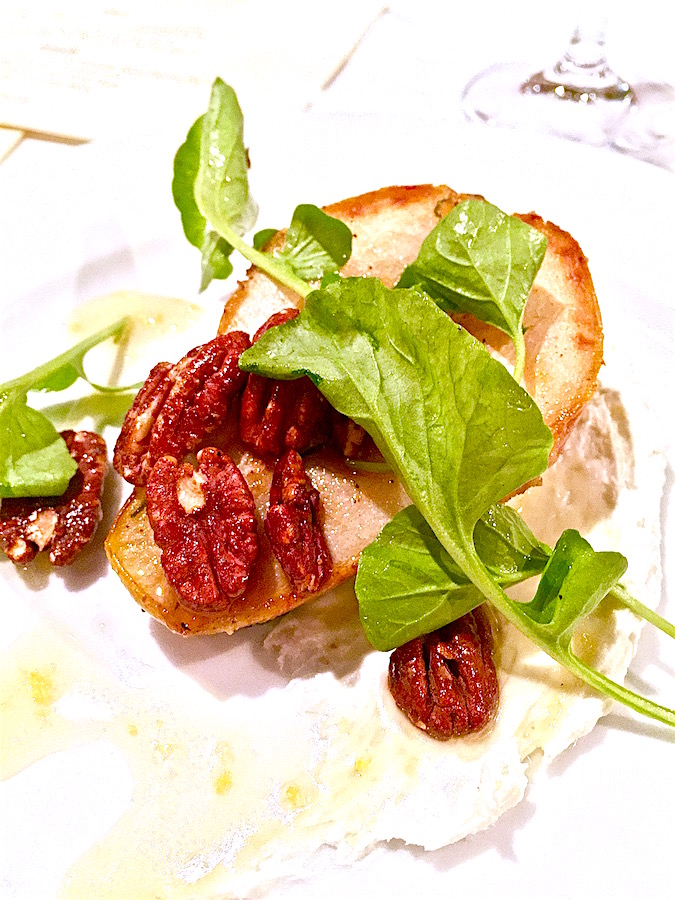 We continued with a duo of Evening Land Pinot Noirs from Oregon's Eola-Amity Hills which Parr described as, "A beautiful place with rolling hills that looks like the southern part of Burgundy." We began with the '13 Eola-Amity Hills Pinot paired with Coriander Spiced Yellowfin Tuna with Chickpea & Grilled Onion Salad, Tahini, Pomegranate and Basil. The wine was bright and lively with ebullient notes of ripe red cherry, pomegranate and spice. While it paired nicely with the spiced tuna, this wine's versatile acidity and medium body made it an equally good pairing with the bright fruit flavors of the next dish as well.The '13 Seven Springs Vineyard Pinot was paired with Roasted Long Island Duck Breast with Parmesan Polenta, Pinot Noir Reduction, Poached Plum and Local Greens. The single vineyard Pinot was more angular than the previous wine, exhibiting more minerality and tannin structure accompanied by similarly lovely notes of ripe red fruit, cherry and raspberry. It stood up nicely to the richness of the duck while synergizing with its delightfully fruity flavors.
We continued with a duo of Evening Land Pinot Noirs from Oregon's Eola-Amity Hills which Parr described as, "A beautiful place with rolling hills that looks like the southern part of Burgundy." We began with the '13 Eola-Amity Hills Pinot paired with Coriander Spiced Yellowfin Tuna with Chickpea & Grilled Onion Salad, Tahini, Pomegranate and Basil. The wine was bright and lively with ebullient notes of ripe red cherry, pomegranate and spice. While it paired nicely with the spiced tuna, this wine's versatile acidity and medium body made it an equally good pairing with the bright fruit flavors of the next dish as well.The '13 Seven Springs Vineyard Pinot was paired with Roasted Long Island Duck Breast with Parmesan Polenta, Pinot Noir Reduction, Poached Plum and Local Greens. The single vineyard Pinot was more angular than the previous wine, exhibiting more minerality and tannin structure accompanied by similarly lovely notes of ripe red fruit, cherry and raspberry. It stood up nicely to the richness of the duck while synergizing with its delightfully fruity flavors.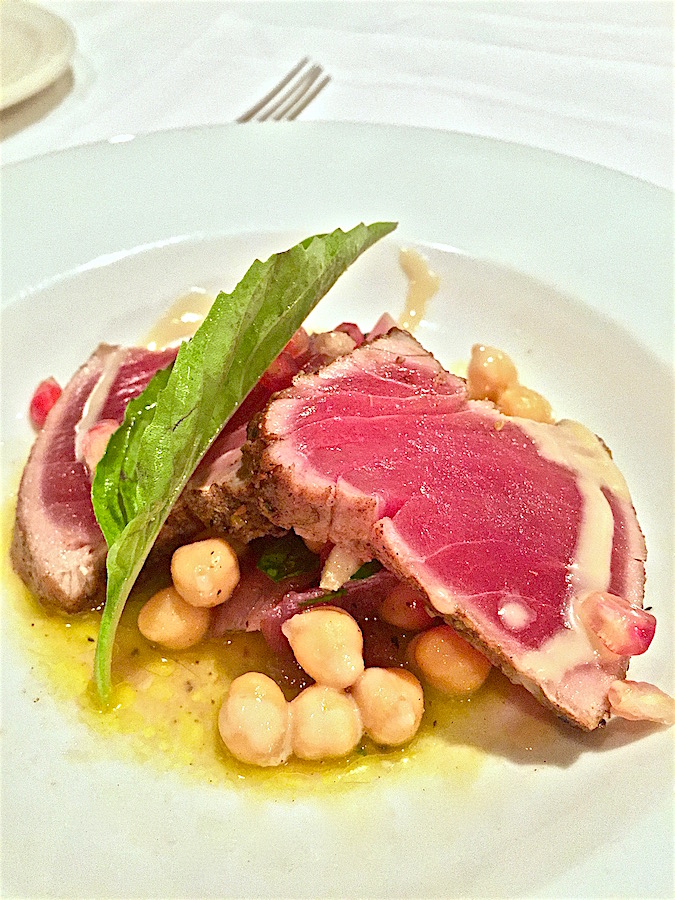
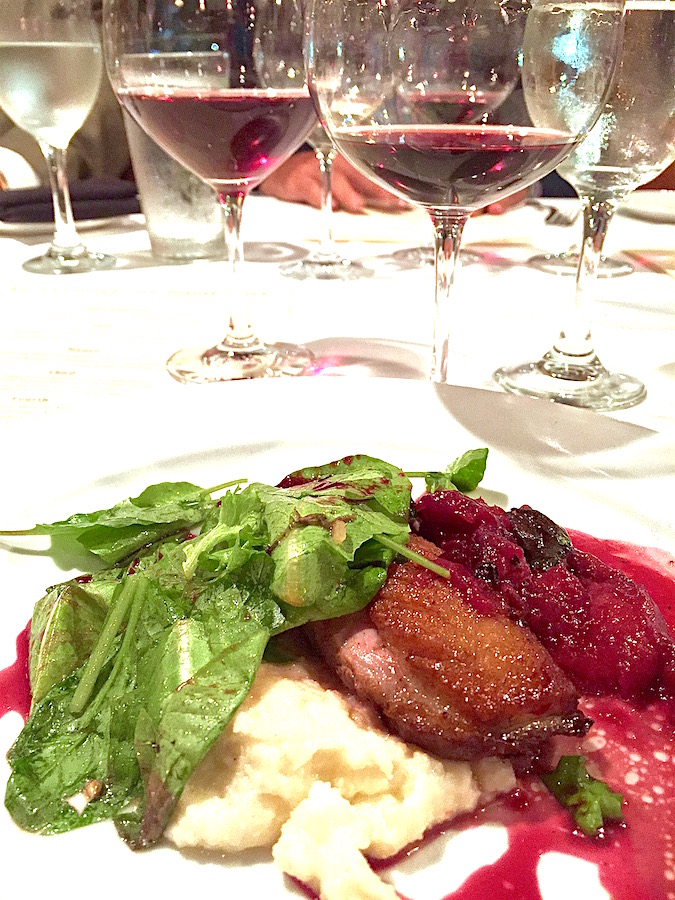 Next were the two Domaine de la Côte Pinots from California's Sta. Rita Hills. "The name means 'State of Slopes,'" Parr explained, "and we have five different vineyards planted on different soils in an amphitheater setting right on the coast of Santa Barbara, 8 miles from the ocean." When it comes to making wine, Parr stays true to his belief of minimal intervention in the vineyard and cellar, "We make the wines in a very traditional way, everything is fermented in whole clusters in large concrete tanks. The vines are all planted on virgin soils and grown organically with no additives."We enjoyed both Domaine de la Côte Pinots paired with Chef's Grilled Filet Mignon with Roasted Fingerling Potatoes, Wilted Greens and Wild Mushroom Jus. The '12 Sta. Rita Hills Pinot is a blend of different estate parcels, while the '13 Bloom's Field is a single vineyard offering. Parr explained, "2012 was a warmer vintage, while 2013 was cooler," which was readily evident when tasting the wines. The warmer temperatures of 2012 resulted in a wine with more perfumed aromatics of black cherry, cola and cassis and riper fruit, while the cooler 2013 vintage Bloom's Field single vineyard wine was more reserved with notes of spiced cherry, rose petal, earth and plum.
Next were the two Domaine de la Côte Pinots from California's Sta. Rita Hills. "The name means 'State of Slopes,'" Parr explained, "and we have five different vineyards planted on different soils in an amphitheater setting right on the coast of Santa Barbara, 8 miles from the ocean." When it comes to making wine, Parr stays true to his belief of minimal intervention in the vineyard and cellar, "We make the wines in a very traditional way, everything is fermented in whole clusters in large concrete tanks. The vines are all planted on virgin soils and grown organically with no additives."We enjoyed both Domaine de la Côte Pinots paired with Chef's Grilled Filet Mignon with Roasted Fingerling Potatoes, Wilted Greens and Wild Mushroom Jus. The '12 Sta. Rita Hills Pinot is a blend of different estate parcels, while the '13 Bloom's Field is a single vineyard offering. Parr explained, "2012 was a warmer vintage, while 2013 was cooler," which was readily evident when tasting the wines. The warmer temperatures of 2012 resulted in a wine with more perfumed aromatics of black cherry, cola and cassis and riper fruit, while the cooler 2013 vintage Bloom's Field single vineyard wine was more reserved with notes of spiced cherry, rose petal, earth and plum.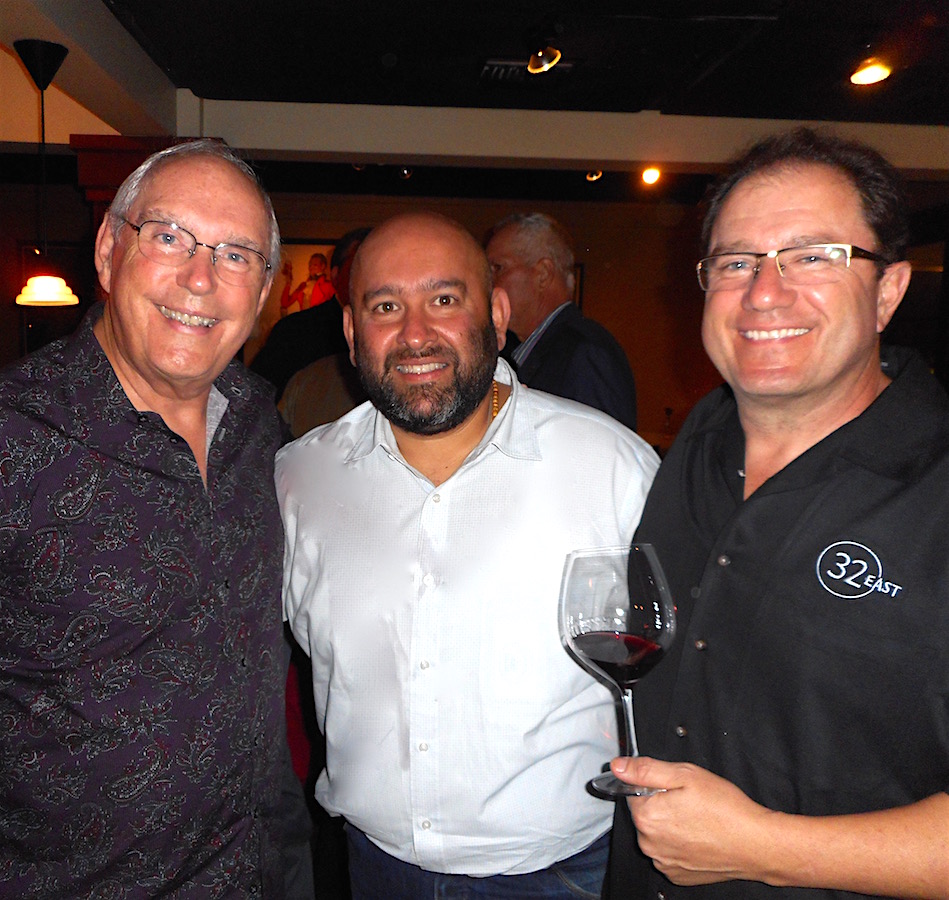 The opportunity to sample Parr's wines from Oregon and California side by side revealed differences between the two terroirs, 'The [Sta. Rita Hills] Pinots are lower in alcohol than the Oregon wines, yet they have more body, texture and aromatics. Oregon's volcanic soils result in more jagged tannins with smokier flavors while the marine sedimentary soil of California's Sta. Rita Hills results in wines that are velvety and fruity with notes of cola and Asian five spice that have lower tannins."When asked about aging these wines, he added, "The Sta. Rita Hills Pinots are probably best enjoyed when 5-7 years old, while Oregon Pinots are best 10-15 years old."
The opportunity to sample Parr's wines from Oregon and California side by side revealed differences between the two terroirs, 'The [Sta. Rita Hills] Pinots are lower in alcohol than the Oregon wines, yet they have more body, texture and aromatics. Oregon's volcanic soils result in more jagged tannins with smokier flavors while the marine sedimentary soil of California's Sta. Rita Hills results in wines that are velvety and fruity with notes of cola and Asian five spice that have lower tannins."When asked about aging these wines, he added, "The Sta. Rita Hills Pinots are probably best enjoyed when 5-7 years old, while Oregon Pinots are best 10-15 years old."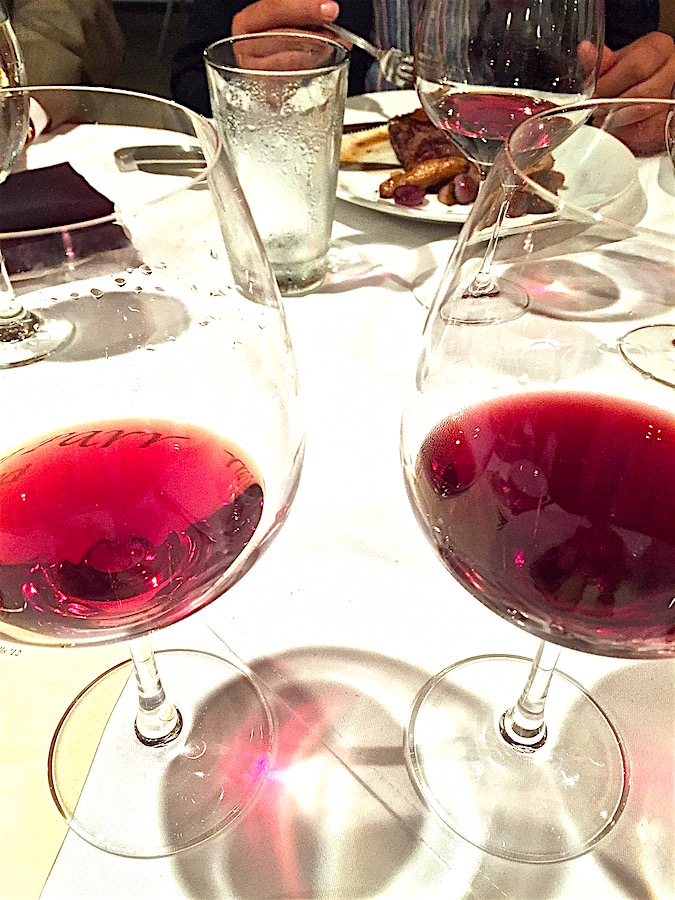 Each wine we sampled during the course of the delightful evening, both the Chardonnay and Pinot Noirs, revealed its own distinct terroir reflecting its unique place of origin. Lucky dinner guests also got to enjoy a guided tour of these wines full of wonderful details and insights straight from the Somm's mouth.For more information on Raj Parr's wines, please visit the websites of Evening Land Vineyards and Domaine de la Côte.Bon appétit,
Each wine we sampled during the course of the delightful evening, both the Chardonnay and Pinot Noirs, revealed its own distinct terroir reflecting its unique place of origin. Lucky dinner guests also got to enjoy a guided tour of these wines full of wonderful details and insights straight from the Somm's mouth.For more information on Raj Parr's wines, please visit the websites of Evening Land Vineyards and Domaine de la Côte.Bon appétit,
The term terroir refers to the way a region’s climate, soil and winemaking techniques converge to express themselves in your wine glass. Terroir-driven wines reflect a region’s unique characteristics, meaning even wines made from the same grape variety can look, smell and taste very different depending on where they’re from. While it’s one thing to explore this concept by reading wine magazines, books or your favorite blog, it’s another to have a world-renowned Sommelier and winemaker come to town and demonstrate it for you. Using his own wines.
Such was the case recently, when one of the world’s most celebrated Somms hosted a wine dinner for lucky wine lovers at one of our favorite local restaurants here in Delray Beach. The multi-course meal at 32 East featured two-time James Beard Award winner and author of Secrets of the Sommeliers, Rajat Parr, and wines from two of his latest vinous projects, Evening Land Vineyards and Domaine de la Côte, hailing from Oregon and California respectively.

The sold out dinner featured a selection of Parr’s Chardonnays and Pinot Noirs paired with the cuisine of 32 East Chef, John Thomas. During the course of the evening, Parr shared details of his own personal journey. Born and raised in Calcutta, Parr was first introduced to great wines at the age of 20 by his Uncle who lived in London. He later made his way to the United States and studied at the prestigious Culinary Institute of America’s Hyde Park campus to become a Chef. After graduation, however, his love of the cellar prevailed and he proceeded to learn from the best. Parr honed his vinous acumen and tasting skills under the tutelage of Master Sommelier Larry Stone at his iconic San Francisco restaurant, Rubicon.
Parr later joined forces with Chef Michael Mina as Wine Director of what would become The Mina Group’s eponymous culinary empire, consisting of over 20 restaurants across the country. During this time, Parr’s travels to European wine regions and work as a Somm gave rise to a curiosity about winemaking. He developed a particular affection for the wines of Burgundy and its hallmark grape varieties, Chardonnay and Pinot Noir. Santa Barbara winemaker Sashi Moorman shared Parr’s love of balanced, food friendly wines and in 2011, the two partnered on their first of many winemaking ventures, Sandhi, which focused on Chardonnay and Pinot Noir from select vineyards in California’s Sta. Rita Hills.

While the Sandhi wines were crafted from purchased grapes, in 2013 Parr debuted the wines of his new estate vineyard, Domaine de la Côte, located in California’s western Sta. Rita Hills. In 2014, he and Moorman also took control of the acclaimed Seven Springs Vineyard in Oregon’s Eola-Amity Hills. Riding on the momentum of these projects, and the desire to focus on making wine, Parr recently made two major life adjustments.
In March he quietly (and amicably) parted ways with the Mina Group, sharing, “I’m officially retired from the restaurant, but they know they can call me any time.” Parr is also winding down the trend-setting, controversial, non-profit wine group, In Pursuit of Balance he co-founded with Jasmine Hirsch in 2011. As set forth in their Manifesto of Balance, IPOB favors, “balanced, non-manipulated incarnations of Chardonnay and Pinot Noir.” By eschewing the syrupy, high octane versions currently being marketed to US consumers, some acclaimed wine critics viewed the group as “elitist” which made some waves in the wine world. “We started it for fun and it was supposed to be a small intimate tasting but it became this big thing,” he reflected. “It’s just too much work now, but it definitely showed people the different styles of wine.” The group’s final tasting will take place in mid-November.

After being introduced by 32 East Manager John Bates, Parr began the evening by reiterating his preferred style of wine, “I prefer crisp, clean, fresh and energetic wines,” while acknowledging, “I know the style in California is not necessarily that, but we make wine in a more European style…that’s the path we follow.”
We started with Parr’s Oregonian wines, specifically the enchanting 2012 Evening Land Vineyard Seven Springs Chardonnay which was lithe and crisp with a bright acidity. “2012 was an epic vintage in Oregon, but we made very little Chardonnay,” Parr stated. “We took over while the 2012’s were still in barrel, 2014 is the first vintage we had full control.” Chef’s Oak Roasted D’Anjou Pear with Whipped Goat Cheese, Spiced Pecans, Lemon Honey and Upland Cresse complemented the Chard beautifully, harmonizing with layers of citrus, stone fruit and pineapple accentuated by a kiss of toasty oak. The lovely white continued to evolve in the glass over the course of the next hour when I begrudgingly took my last sip.

Oak Roasted D’Anjou Pear with Whipped Goat Cheese, Spiced Pecans & Lemon Honey
We continued with a duo of Evening Land Pinot Noirs from Oregon’s Eola-Amity Hills which Parr described as, “A beautiful place with rolling hills that looks like the southern part of Burgundy.” We began with the ’13 Eola-Amity Hills Pinot paired with Coriander Spiced Yellowfin Tuna with Chickpea & Grilled Onion Salad, Tahini, Pomegranate and Basil. The wine was bright and lively with ebullient notes of ripe red cherry, pomegranate and spice. While it paired nicely with the spiced tuna, this wine’s versatile acidity and medium body made it an equally good pairing with the bright fruit flavors of the next dish as well.
The ’13 Seven Springs Vineyard Pinot was paired with Roasted Long Island Duck Breast with Parmesan Polenta, Pinot Noir Reduction, Poached Plum and Local Greens. The single vineyard Pinot was more angular than the previous wine, exhibiting more minerality and tannin structure accompanied by similarly lovely notes of ripe red fruit, cherry and raspberry. It stood up nicely to the richness of the duck while synergizing with its delightfully fruity flavors.

Coriander Spiced Yellowfin Tuna with Chickpea & Grilled Onion Salad, Tahini, Pomegranate & Basil

Roasted Long Island Duck Breast with Parmesan Polenta, Pinot Noir Reduction & Poached Plum
Next were the two Domaine de la Côte Pinots from California’s Sta. Rita Hills. “The name means ‘State of Slopes,'” Parr explained, “and we have five different vineyards planted on different soils in an amphitheater setting right on the coast of Santa Barbara, 8 miles from the ocean.” When it comes to making wine, Parr stays true to his belief of minimal intervention in the vineyard and cellar, “We make the wines in a very traditional way, everything is fermented in whole clusters in large concrete tanks. The vines are all planted on virgin soils and grown organically with no additives.”
We enjoyed both Domaine de la Côte Pinots paired with Chef’s Grilled Filet Mignon with Roasted Fingerling Potatoes, Wilted Greens and Wild Mushroom Jus. The ’12 Sta. Rita Hills Pinot is a blend of different estate parcels, while the ’13 Bloom’s Field is a single vineyard offering. Parr explained, “2012 was a warmer vintage, while 2013 was cooler,” which was readily evident when tasting the wines. The warmer temperatures of 2012 resulted in a wine with more perfumed aromatics of black cherry, cola and cassis and riper fruit, while the cooler 2013 vintage Bloom’s Field single vineyard wine was more reserved with notes of spiced cherry, rose petal, earth and plum.

The opportunity to sample Parr’s wines from Oregon and California side by side revealed differences between the two terroirs, ‘The [Sta. Rita Hills] Pinots are lower in alcohol than the Oregon wines, yet they have more body, texture and aromatics. Oregon’s volcanic soils result in more jagged tannins with smokier flavors while the marine sedimentary soil of California’s Sta. Rita Hills results in wines that are velvety and fruity with notes of cola and Asian five spice that have lower tannins.”
When asked about aging these wines, he added, “The Sta. Rita Hills Pinots are probably best enjoyed when 5-7 years old, while Oregon Pinots are best 10-15 years old.”

Oregon (left) & California (right) Pinot Noirs even look different!
Each wine we sampled during the course of the delightful evening, both the Chardonnay and Pinot Noirs, revealed its own distinct terroir reflecting its unique place of origin. Lucky dinner guests also got to enjoy a guided tour of these wines full of wonderful details and insights straight from the Somm’s mouth.
For more information on Raj Parr’s wines, please visit the websites of Evening Land Vineyards and Domaine de la Côte.
Bon appétit,
![]()
The post A Special Evening with Sommelier Rajat Parr at 32 East appeared first on The Glamorous Gourmet.
This time of year I love to revel in reds. Big, bold, complex, luxurious reds. And what better place to find them than California's Napa Valley? Recently, I had the pleasure of sampling one such red wine - our Wine of the Week, the 2012 Brandlin Vineyard Cabernet Sauvignon Mount Veeder.Who it's from: The Brandlin family were early pioneers of Mount Veeder and began farming grapes there in the early 1870's. The Brandlin Vineyard was founded in 1926 by Chester Brandlin's grandfather, and Chester himself continued to farm the vineyard for over 50 years. In an interview featured on the winery's website, Brandlin fondly recalls growing grapes during the tough Prohibition years which ultimately devastated California's budding wine industry. How did the family avoid getting caught? "We were good friends with the Sheriff," Brandlin remarked coyly.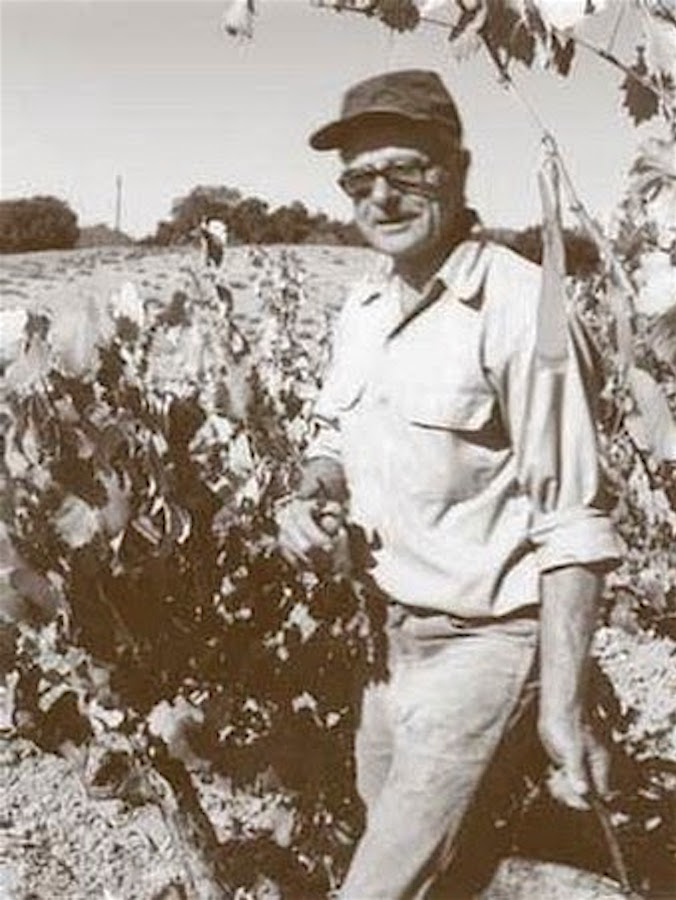 As winemaker for Napa Valley's Cuvaison and Brandlin since 2002, both of Cuvaison Estate Wines, Steven Rogstad honed his sense of terroir as a graduate student of Enology and Viticulture at UC Davis. During his studies, Rogstad experimented with non-commercial yeast strains on lots of wine from fifty different wineries across the appellation. This project also developed his ability to work with and blend small lots which is crucial to his winemaking style today. Over the years, Rogstad has worked with and advised such well-regarded names as Viader, Dominus, Duckhorn and Spottswoode. He was ultimately draw to Cuvaison's estate vineyard in Carneros as well as the opportunity to build their new winery from the ground up.
As winemaker for Napa Valley's Cuvaison and Brandlin since 2002, both of Cuvaison Estate Wines, Steven Rogstad honed his sense of terroir as a graduate student of Enology and Viticulture at UC Davis. During his studies, Rogstad experimented with non-commercial yeast strains on lots of wine from fifty different wineries across the appellation. This project also developed his ability to work with and blend small lots which is crucial to his winemaking style today. Over the years, Rogstad has worked with and advised such well-regarded names as Viader, Dominus, Duckhorn and Spottswoode. He was ultimately draw to Cuvaison's estate vineyard in Carneros as well as the opportunity to build their new winery from the ground up.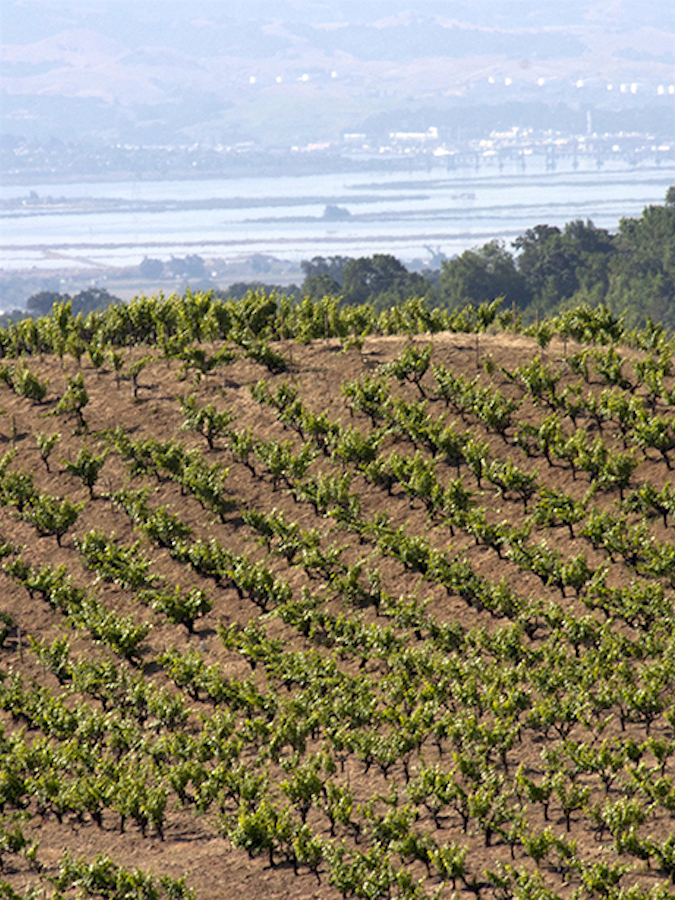 Where it's from: Named for Dutch Pastor Peter Veeder in the mid-1800's, Mount Veeder is located among the southern Mayacamas mountains adjoining Carneros. Existing within the Napa AVA, the Mount Veeder AVA (American Viticultural Area) was established in 1993 and features vineyards which are highly exposed to elements including the winds off of San Pablo Bay. This exposure is responsible for Mount Veeder's unusually cool temperatures, resulting in the longest growing season of any AVA in Napa Valley.“Steep rocky soils and a moderate climate render intense, black fruited concentration and a powerful backbone of tannin that make this wine unique.” - Steven Rogstad, WinemakerThe Brandlin Vineyard is located on a Mount Veeder ridgeline on the valley’s west side. Perched at 900 to 1,150 feet in elevation, the vineyard is divided into 15 different blocks facing a multitude of different aspects. The varied differences in sun exposure, slope and soil composition provide distinct fruit characteristics in each block. These unique conditions have led to Mount Veeder's well-deserved reputation as an ideal place to grow world class Cabernet Sauvignon characterized by briary aromas and flavors with herbal and floral notes which are often powerful and high in tannin.
Where it's from: Named for Dutch Pastor Peter Veeder in the mid-1800's, Mount Veeder is located among the southern Mayacamas mountains adjoining Carneros. Existing within the Napa AVA, the Mount Veeder AVA (American Viticultural Area) was established in 1993 and features vineyards which are highly exposed to elements including the winds off of San Pablo Bay. This exposure is responsible for Mount Veeder's unusually cool temperatures, resulting in the longest growing season of any AVA in Napa Valley.“Steep rocky soils and a moderate climate render intense, black fruited concentration and a powerful backbone of tannin that make this wine unique.” - Steven Rogstad, WinemakerThe Brandlin Vineyard is located on a Mount Veeder ridgeline on the valley’s west side. Perched at 900 to 1,150 feet in elevation, the vineyard is divided into 15 different blocks facing a multitude of different aspects. The varied differences in sun exposure, slope and soil composition provide distinct fruit characteristics in each block. These unique conditions have led to Mount Veeder's well-deserved reputation as an ideal place to grow world class Cabernet Sauvignon characterized by briary aromas and flavors with herbal and floral notes which are often powerful and high in tannin.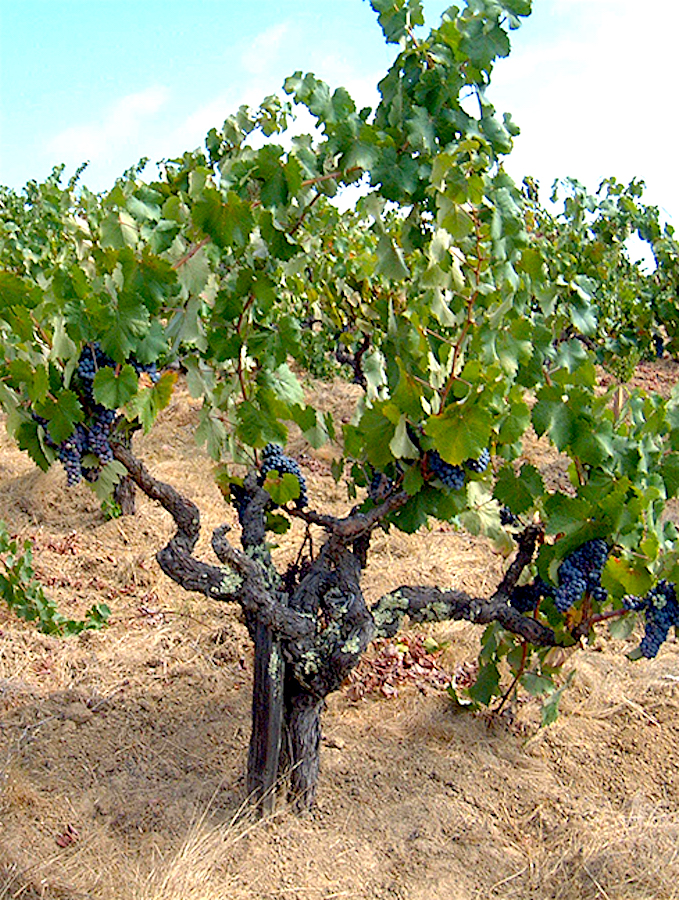 Wine by the (Geeky) Numbers:Harvest Date: Oct 11- 30Age of Vines: 12 years averageFermentation: 15 - 28 daysBarrel Aging: 22 months in small French oak barrels (50% new)ML: 100%Blend: 77% Cabernet Sauvignon, 9% Malbec, 9% Cabernet Franc and 5% Petit VerdotAlcohol: 14.5%Acid: 6.2pH: 3.70The Glamorous Gourmet's Tasting Note: The Brandlin Vineyard Cabernet Sauvignon Mount Veeder possesses an opaque, deep purple color and aromas of spiced red and black fruit. On the palate, this opulent wine demonstrates remarkable balance while exhibiting notes of ripe blackberry, cassis, earth and luxuriously firm tannins. The wine's harmonious flavors and textures hold together beautifully on the long, lingering finish.Pair it with: Enjoy this immensely pleasurable wine with a juicy, well-marbled New York Strip Steak, our own delicious Steak au Poivre or even an aged cheese. Roast duck or pork with a blackberry sauce would also be fabulous!MSRP: $68 (for purchasing information, please e-mail stephanie@theglamorousgourmet.com or call 561.317.6663)Bon appétit,
Wine by the (Geeky) Numbers:Harvest Date: Oct 11- 30Age of Vines: 12 years averageFermentation: 15 - 28 daysBarrel Aging: 22 months in small French oak barrels (50% new)ML: 100%Blend: 77% Cabernet Sauvignon, 9% Malbec, 9% Cabernet Franc and 5% Petit VerdotAlcohol: 14.5%Acid: 6.2pH: 3.70The Glamorous Gourmet's Tasting Note: The Brandlin Vineyard Cabernet Sauvignon Mount Veeder possesses an opaque, deep purple color and aromas of spiced red and black fruit. On the palate, this opulent wine demonstrates remarkable balance while exhibiting notes of ripe blackberry, cassis, earth and luxuriously firm tannins. The wine's harmonious flavors and textures hold together beautifully on the long, lingering finish.Pair it with: Enjoy this immensely pleasurable wine with a juicy, well-marbled New York Strip Steak, our own delicious Steak au Poivre or even an aged cheese. Roast duck or pork with a blackberry sauce would also be fabulous!MSRP: $68 (for purchasing information, please e-mail stephanie@theglamorousgourmet.com or call 561.317.6663)Bon appétit,
This time of year I love to revel in reds. Big, bold, complex, luxurious reds. And what better place to find them than California’s Napa Valley? Recently, I had the pleasure of sampling one such red wine – our Wine of the Week, the 2012 Brandlin Vineyard Cabernet Sauvignon Mount Veeder.
Who it’s from: The Brandlin family were early pioneers of Mount Veeder and began farming grapes there in the early 1870’s. The Brandlin Vineyard was founded in 1926 by Chester Brandlin’s grandfather, and Chester himself continued to farm the vineyard for over 50 years. In an interview featured on the winery’s website, Brandlin fondly recalls growing grapes during the tough Prohibition years which ultimately devastated California’s budding wine industry. How did the family avoid getting caught? “We were good friends with the Sheriff,” Brandlin remarked coyly.

Chester Brandlin in the family’s Brandlin Vineyard on Mount Veeder
As winemaker for Napa Valley’s Cuvaison and Brandlin since 2002, both of Cuvaison Estate Wines, Steven Rogstad honed his sense of terroir as a graduate student of Enology and Viticulture at UC Davis. During his studies, Rogstad experimented with non-commercial yeast strains on lots of wine from fifty different wineries across the appellation. This project also developed his ability to work with and blend small lots which is crucial to his winemaking style today. Over the years, Rogstad has worked with and advised such well-regarded names as Viader, Dominus, Duckhorn and Spottswoode. He was ultimately draw to Cuvaison’s estate vineyard in Carneros as well as the opportunity to build their new winery from the ground up.

Where it’s from: Named for Dutch Pastor Peter Veeder in the mid-1800’s, Mount Veeder is located among the southern Mayacamas mountains adjoining Carneros. Existing within the Napa AVA, the Mount Veeder AVA (American Viticultural Area) was established in 1993 and features vineyards which are highly exposed to elements including the winds off of San Pablo Bay. This exposure is responsible for Mount Veeder’s unusually cool temperatures, resulting in the longest growing season of any AVA in Napa Valley.
“Steep rocky soils and a moderate climate render intense, black fruited concentration and a powerful backbone of tannin that make this wine unique.”
– Steven Rogstad, Winemaker
The Brandlin Vineyard is located on a Mount Veeder ridgeline on the valley’s west side. Perched at 900 to 1,150 feet in elevation, the vineyard is divided into 15 different blocks facing a multitude of different aspects. The varied differences in sun exposure, slope and soil composition provide distinct fruit characteristics in each block. These unique conditions have led to Mount Veeder’s well-deserved reputation as an ideal place to grow world class Cabernet Sauvignon characterized by briary aromas and flavors with herbal and floral notes which are often powerful and high in tannin.

Beautiful Old Vines in the Brandlin Vineyard
Wine by the (Geeky) Numbers:
Harvest Date: Oct 11- 30
Age of Vines: 12 years average
Fermentation: 15 – 28 days
Barrel Aging: 22 months in small French oak barrels (50% new)
ML: 100%
Blend: 77% Cabernet Sauvignon, 9% Malbec, 9% Cabernet Franc and 5% Petit Verdot
Alcohol: 14.5%
Acid: 6.2
pH: 3.70
The Glamorous Gourmet’s Tasting Note: The Brandlin Vineyard Cabernet Sauvignon Mount Veeder possesses an opaque, deep purple color and aromas of spiced red and black fruit. On the palate, this opulent wine demonstrates remarkable balance while exhibiting notes of ripe blackberry, cassis, earth and luxuriously firm tannins. The wine’s harmonious flavors and textures hold together beautifully on the long, lingering finish.
Pair it with: Enjoy this immensely pleasurable wine with a juicy, well-marbled New York Strip Steak, our own delicious Steak au Poivre or even an aged cheese. Roast duck or pork with a blackberry sauce would also be fabulous!
MSRP: $68 (for purchasing information, please e-mail stephanie@theglamorousgourmet.com or call 561.317.6663)
Bon appétit,
![]()
The post Wine of the Week: 2012 Brandlin Vineyard Cabernet Sauvignon Mount Veeder, Napa Valley, California appeared first on The Glamorous Gourmet.
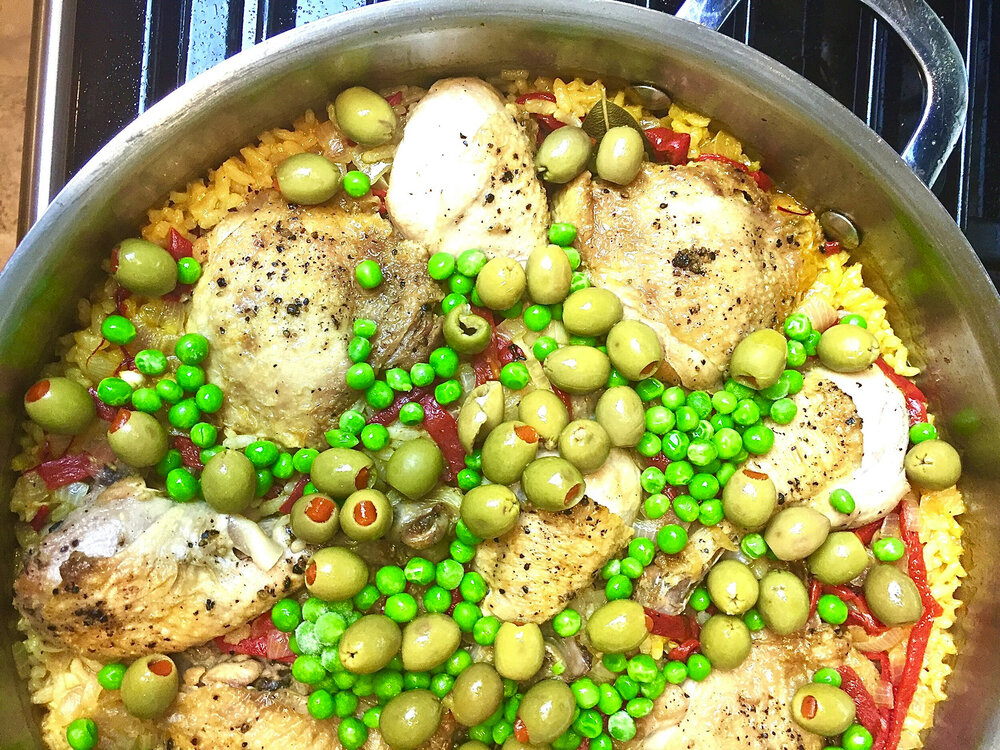
Fall marks the beginning of many seasons, football season, the new seasons of Saturday Night Live, Dancing with the Stars and The Blacklist (YES!) and in my kitchen - one pot meal season!
One pot wonders are hearty, comforting dishes that satisfy our appetites while also giving us a bear hug from the inside out. They're also easier on the cleanup because, well, as you can probably tell from the name, everything happens in ONE pot! This mouthwatering recipe for Arroz con Pollo is an extremely worthy addition to the Fall one pot lineup, featuring succulent dark meat chicken, aromatic garlic, onion and bay leaf and flavorful piquillo peppers cooked together on a fragrant bed of saffron-infused short-grain rice.
Arroz con Pollo, aka Chicken and Rice, is a traditional dish of Spain and Latin America but has different incarnations in many countries around the world. There’s actually much debate as to where the dish originated, as well as which ingredients it should traditionally include. As I have found, these debates can get um, how should I say - passionate? Puerto Ricans, for instance, believe anatto and beer are essential to making Arroz con Pollo while in Spain, saffron is used to impart the dish's signature yellow color. Before anyone gets upset with me, however, please know, this gringa means no disrespect and while this recipe may not be 100% culturally correct - it is most definitely CRAZY DELICIOUS!
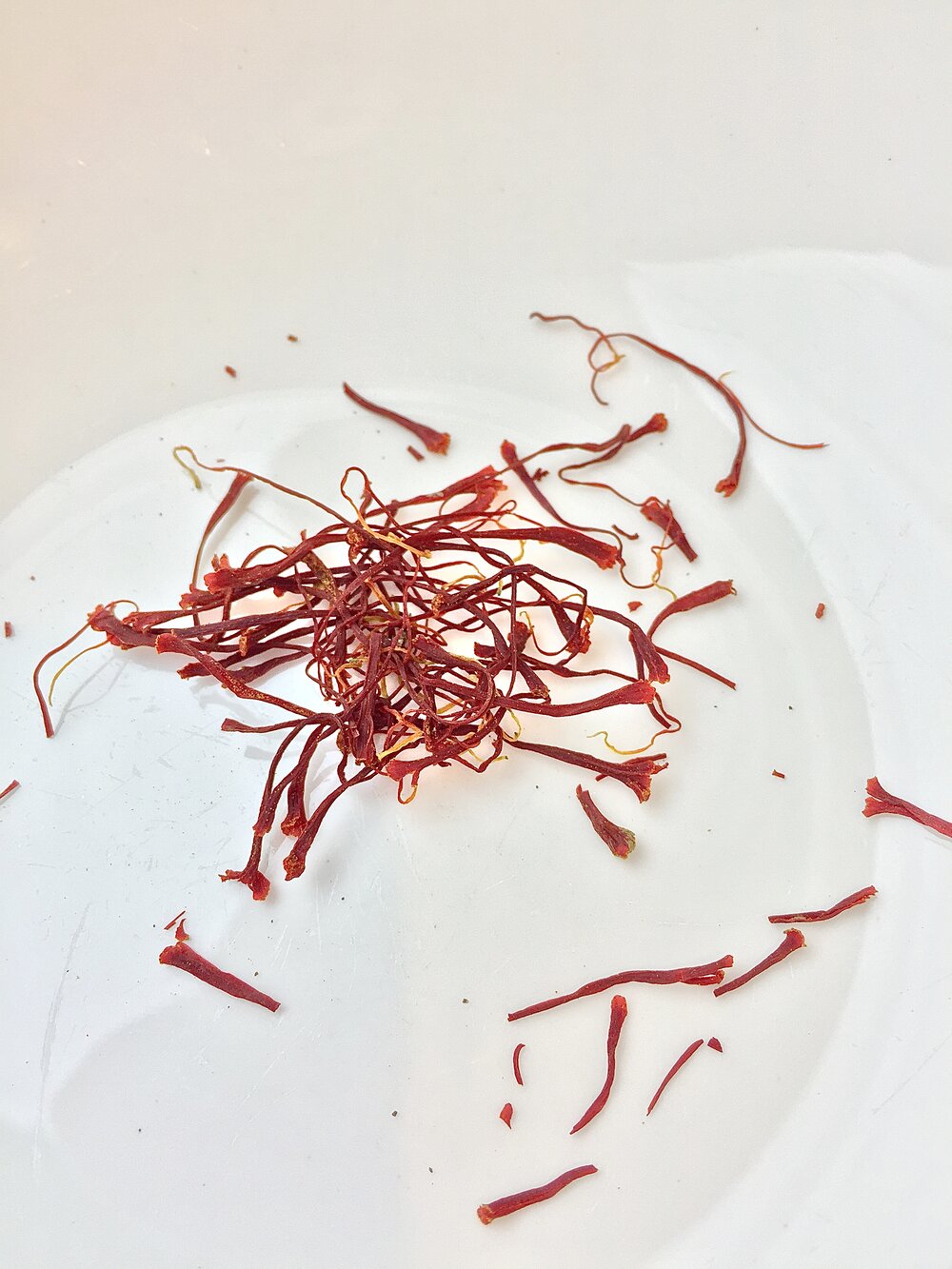
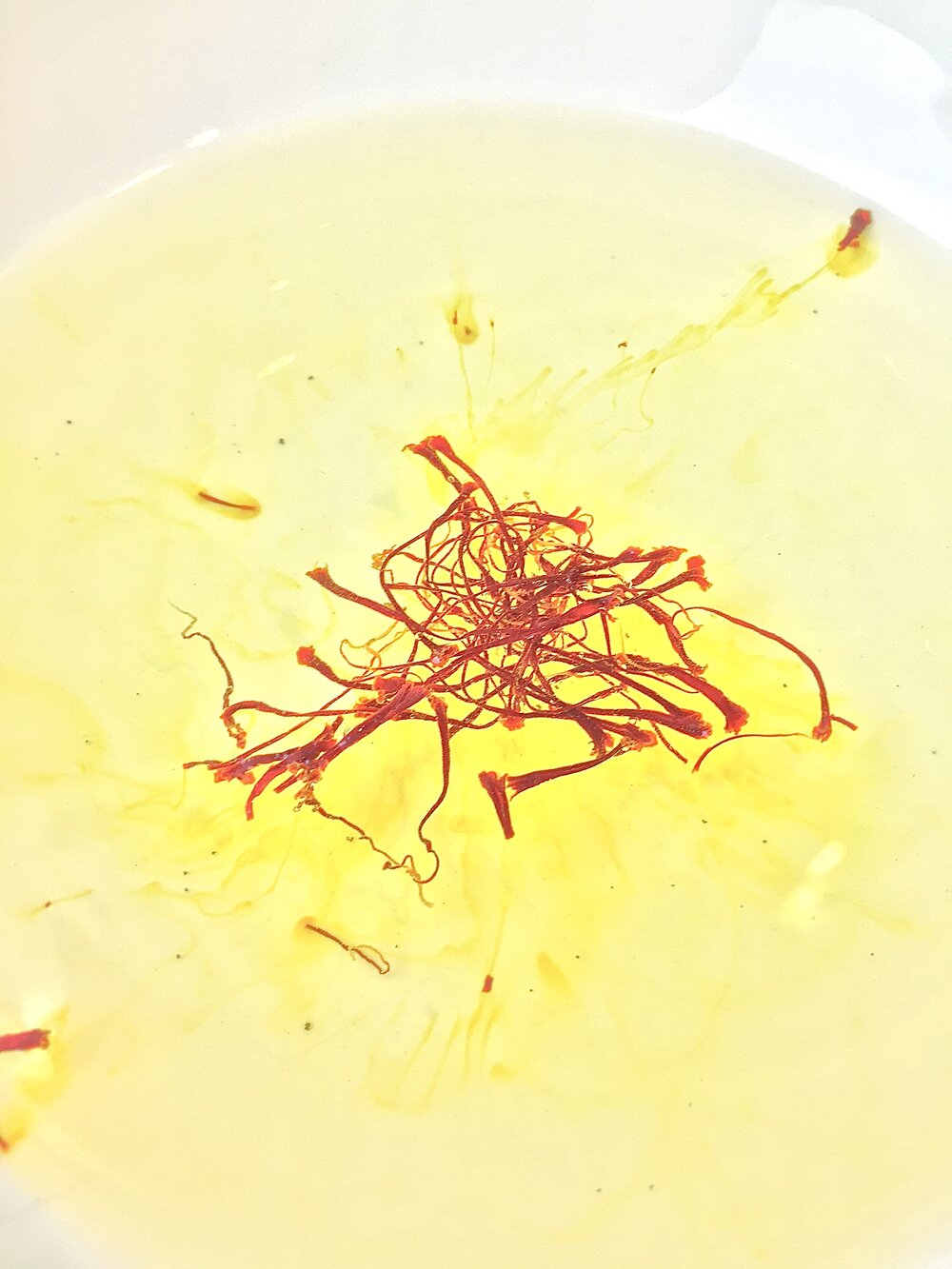


Many incarnations of this dish call for a traditional Spanish "sofrito," a mixture of garlic, tomatoes, onion, olive oil and paprika that is cooked down in advance and blended into a flavorful paste. This recipe for Arroz con Pollo doesn't call for a sofrito per se, yet still uses many of the same ingredients, including minced garlic, onion, bay leaf and roasted piquillo peppers instead of the tomatoes. Rather than cooking them in advance and blending them into a paste, these ingredients are added "on the fly" which streamlines the recipe while also adding tremendous flavor.
Since this recipe for Arroz con Pollo calls for a dry white wine, that's generally what I like to serve with it; preferably, the same wine used in the recipe. And since I love the old adage, "If if grows together, it goes together," a white Rioja, Godello, Albariño or other Spanish white wine would be fabulous.
If you have a hard time finding any of these options though, or want to use something you already have on hand, a Sauvignon Blanc or Pinot Grigio would also be great. When cooking with wine, always use one whose flavor you enjoy because even though the alcohol cooks off, you'll still be left with its "essence."
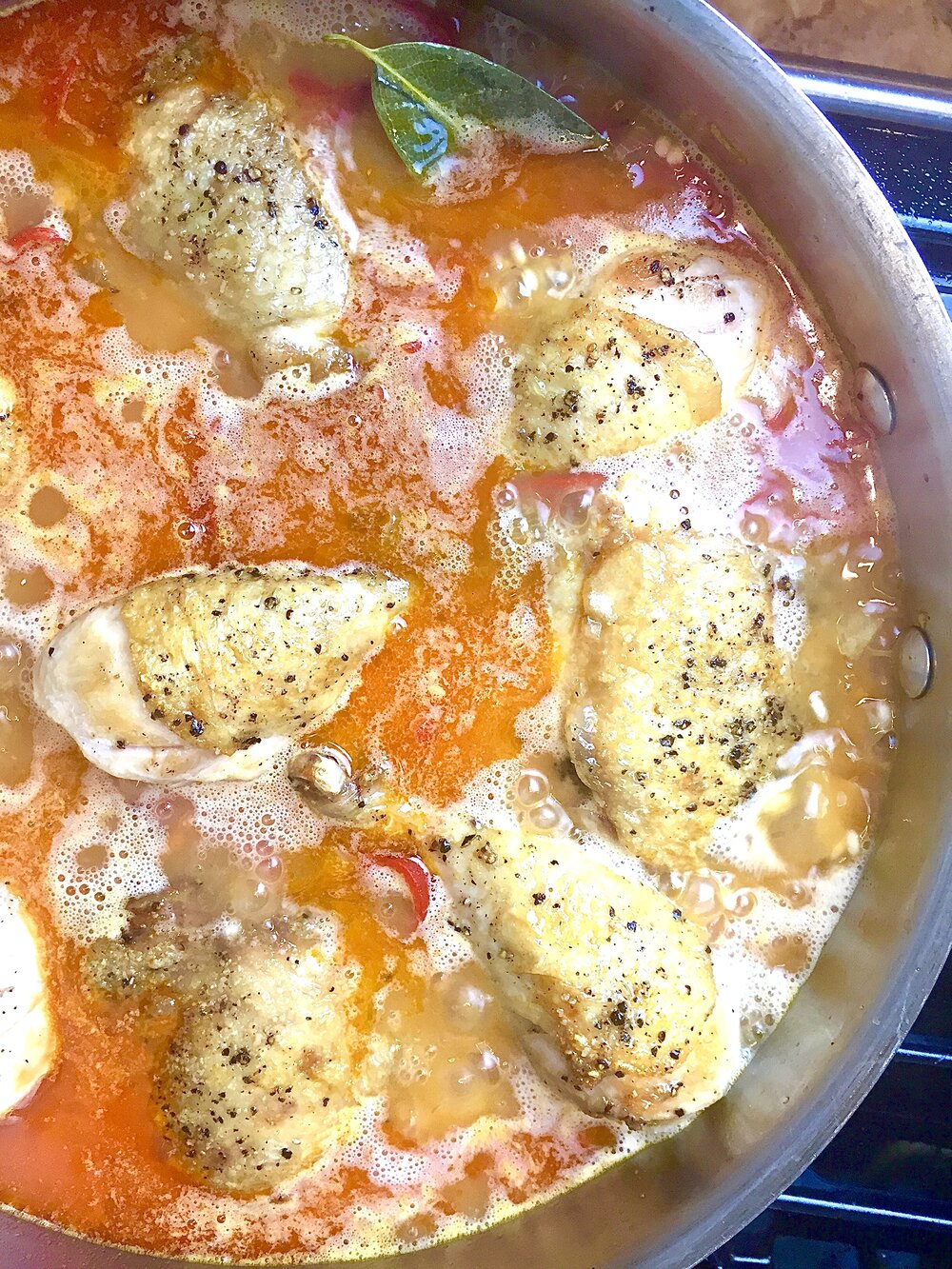
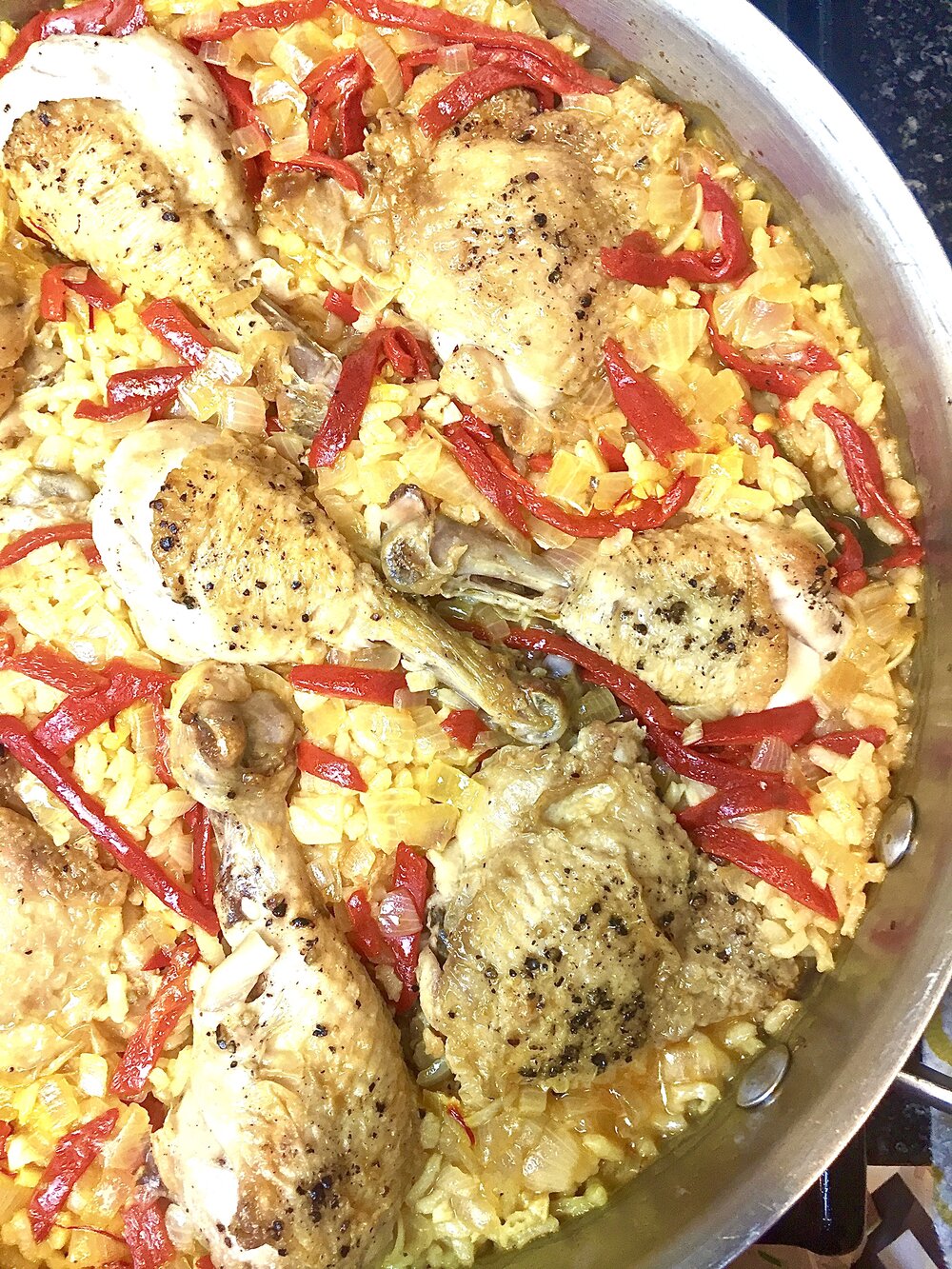
When you pull this gorgeous Arroz con Pollo out of the oven, the intoxicating aromas of the chicken, bay leaf and saffron will literally make your mouth water! One thing I especially love about this dish, is that it is as beautiful as it is delicious. Once you scatter the peas and olives over the pan of cooked chicken and rice, the colors form the most beautiful mosaic.
I hope you enjoy this dish as much as we do and please let me know if you have any favorite one pot meals in the Comments section below + Buen provecho!
Print Recipe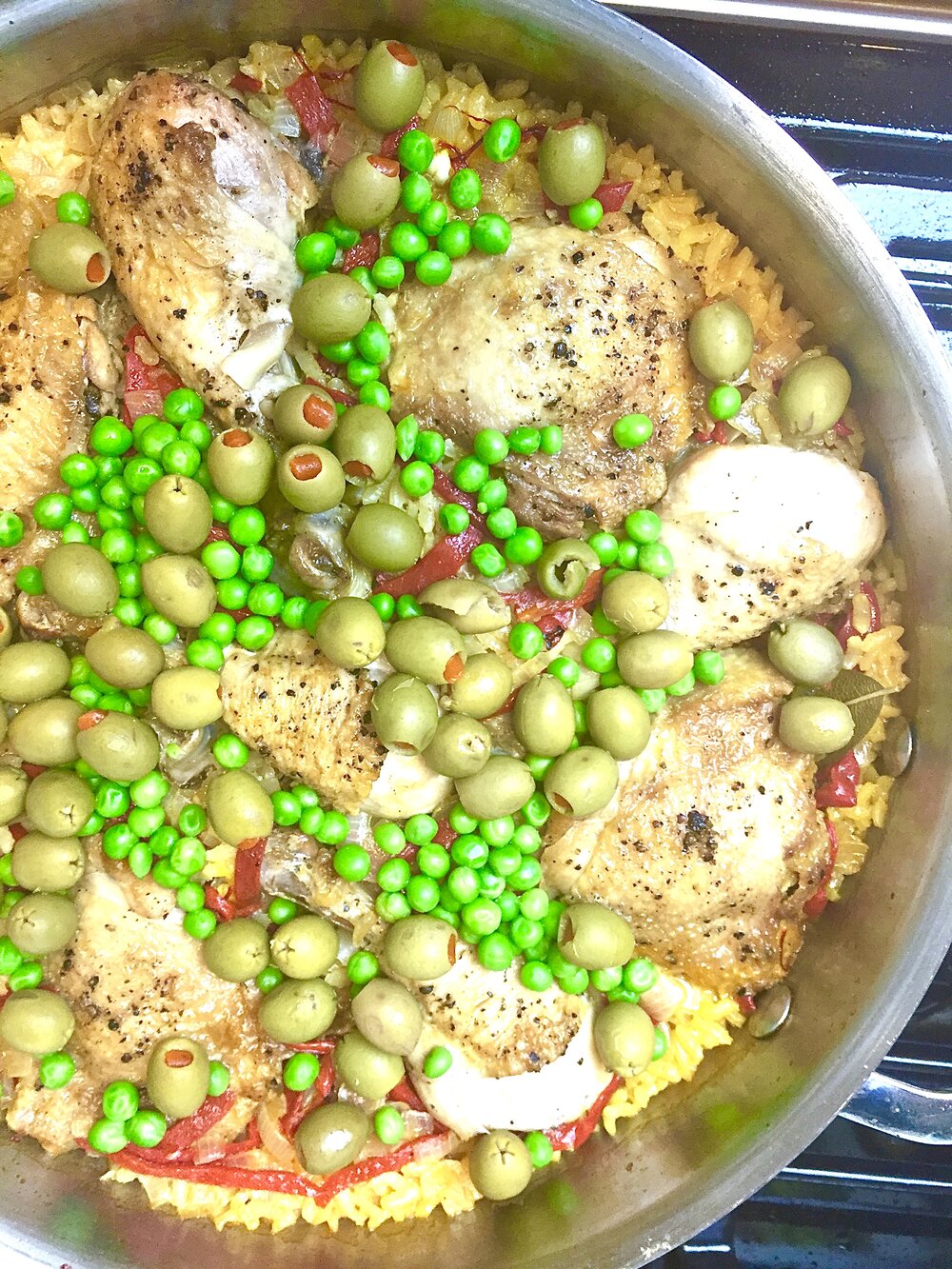

“ARROZ CON POLLO | AKA SPANISH CHICKEN + RICE”
Author: Adapted from Martha Stewart
Prep time: 30 mins - Cook time: 1 hour
Serves 4-6
Ingredients
4 skin on, bone-in chicken thighs
4 skin on, bone-in chicken legs/drumsticks
1 teaspoon or .2g saffron threads
1/2 cup dry white wine, like Sauvignon Blanc or a White Rioja
1 medium yellow onion, minced (1 cup)
3 Tablespoons good olive oil
2 Tablespoons minced garlic (approx 5-6 cloves)
6 jarred, roasted red piquillo peppers, thinly sliced
1 Tablespoon tomato paste
1 1/2 cups short-grain rice, such as Arborio or Bomba
2 dried bay leaves
3 cups chicken stock
1/2 cup frozen peas, thawed slightly
1 cup small Spanish, pimento-stuffed olives
Kosher salt and freshly ground black pepper
Instructions
) Preheat oven to 375 degrees. Place frozen peas in a small dish near the oven as it preheats. Combine saffron threads and wine in a small bowl.
) Pat chicken pieces dry and season them with salt and pepper. Heat olive oil in a large, straight-sided ovenproof skillet over medium-high heat. Add chicken pieces to the heated pan, skin side down, in a single layer and cook until golden brown, 5-6 minutes. Once skin side is golden, turn and brown other sides, about 2-3 additional minutes. Remove chicken pieces to a plate and set aside.
) Pour off all but 3 Tablespoons of fat from the skillet (you might not need to pour anything off though). Add onion, garlic and peppers and cook over medium-high heat until softened, approx. 3 minutes. Stir in tomato paste and cook for 30 seconds more.
) Stir in rice and coat with the fat in the pan, about 30 seconds. Add wine and saffron mixture and cook until completely evaporated, about 30 seconds.
) Stir in bay leaves and broth and return chicken to the pan, skin side up. Bring liquid in pan to a full boil, cover and bake in the oven until liquid is absorbed, rice is tender and chicken is cooked through, about 25-30 minutes.
) Remove from oven and add peas and olives to the skillet, cover and let stand for 15 minutes. Remove bay leaves and serve with a glass of white wine!
Fall marks the beginning of many seasons, football season, the new seasons of Saturday Night Live, Dancing with the Stars and The Blacklist (YES!) and in my kitchen – one pot meal season! These one pot wonders are hearty, comforting dishes that satisfy our appetites while also giving us a bear hug from the inside out. They’re also easier on the cleanup because, well, everything happens in ONE pot! This mouthwatering recipe for Arroz con Pollo is an extremely worthy addition to the Fall one pot lineup, featuring succulent dark meat chicken, aromatic garlic, onion and bay leaf and flavorful piquillo peppers cooked together on a fragrant bed of saffron-infused short-grain rice.

Seasoned drumsticks ready for the pot!
Arroz con Pollo, aka Chicken and Rice, is a traditional dish of Spain and Latin America but has different incarnations in many countries around the world. There is actually much debate as to where the dish originated, as well as which ingredients it should traditionally include. As I have found, these debates can get um, how should I say – passionate? Puerto Ricans, for instance, believe anatto and beer are essential to making Arroz con Pollo while in Spain, saffron is used to impart the dish’s signature yellow color. Before anyone gets upset with me, however, please know, this gringa means no disrespect and while this recipe may not be 100% culturally correct – it is most definitely CRAZY DELICIOUS!

Dried Spanish saffron threads

Saffron releases its gorgeous yellow hue when soaked in white wine
Many incarnations of this dish call for a traditional Spanish “sofrito,” a mixture of garlic, tomatoes, onion, olive oil and paprika that is cooked down in advance and blended into a flavorful paste. Our recipe for Arroz con Pollo doesn’t call for a sofrito per se, yet still uses many of the same ingredients, including minced garlic, onion, bay leaf and roasted piquillo peppers instead of the tomatoes. Rather than cooking them in advance and blending them into a paste, these ingredients are added “on the fly” which streamlines the recipe while also adding tremendous flavor.


Since this recipe for Arroz con Pollo calls for a dry white wine, that’s generally what I like to serve with it; preferably, the same wine used in the recipe. And since I love the old adage, “If if grows together, it goes together,” a white Rioja, Godello, Albariño or other Spanish white wine would be fabulous. If you have a hard time finding any of these options though, or want to use something you already have on hand, a Sauvignon Blanc or Pinot Grigio would also be great. When cooking with wine, always use one whose flavor you enjoy because even though the alcohol cooks off, you’ll still be left with its “essence.”

Before cooking in the oven…

…after cooking in the oven!
When you pull this gorgeous Arroz con Pollo out of the oven, the intoxicating aromas of the chicken, bay leaf and saffron will literally make your mouth water! One things I especially love about this dish, is that it is as beautiful as it is delicious. Once you scatter the peas and olives over the pan of cooked chicken and rice, the colors form the most beautiful mosaic. I hope you enjoy this dish as much as we do and I’d really like to know if you have any favorite one pot meals? Please let me know in the Comments section below!


Buen provecho,
![]()
The post Arroz con Pollo | AKA Spanish Chicken & Rice appeared first on The Glamorous Gourmet.